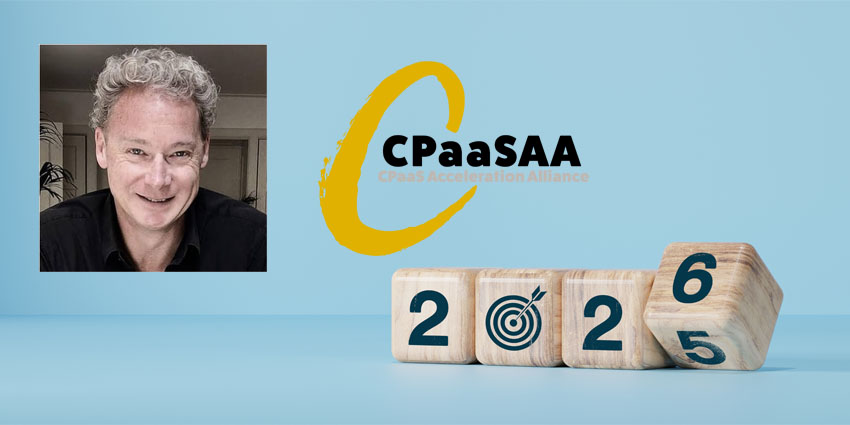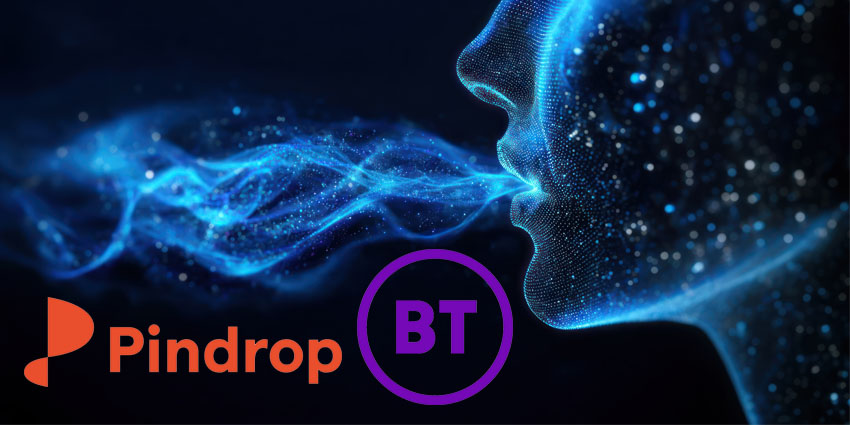The last couple of years have been particularly eventful for digital communications governance and compliance. Employees in virtually every industry are leveraging more communication tools than ever before, from Microsoft Teams to WhatsApp, and they’re struggling to keep data secure.
In both the UK and the US, regulators have imposed billions of dollars in fines against organizations with limited governance strategies. The problem has become significant enough that some highly regulated industries have begun removing teams’ access to UC features.
Ultimately, the evolving landscape highlights a growing need for a new approach to governing communication strategies. Now, leading analysts like Gartner and G2 recognize Digital Communications Governance (DGC) as the future of UC compliance.
So, what exactly is DGC, and how can your company prepare?
What is Digital Communications Governance?
Digital Communications Governance (DGC) is described by Gartner in its hype cycles as an approach to leveraging solutions that give companies methods to monitor and enforce regulatory compliance and corporate governance across a growing communications ecosystem.
G2 issued a similar definition, describing DGC solutions as software that helps regulate, optimize, and manage communication processes across multiple channels, from video to messaging.
DGC is an evolved approach to communications governance intended to drive a more holistic approach to protecting data across every communication channel. It addresses the governance challenges emerging in a world where employees communicate via various apps and tools, and the variety of data produced by teams is evolving.
Why is Digital Communications Governance Important?
So why are industry analysts like Gartner paying increased attention to DGC? The simple answer is that the way we communicate has changed. Gartner predicts that by 2027, 65% of enterprise customers will merge the supervision of text, audio, and video-based content to enable full communications governance.
This underscores the ongoing evolution of the communications landscape. Every day, employees share countless forms of data, from typed and spoken information to whiteboards, visual content, and screens. The rise of more forms of digital communication means people can now connect and share ideas easily, even in hybrid and remote landscapes.
However, traditional governance and compliance strategies are too limited in this world. Email and on-premises voice archives are no longer enough. Companies need to transition to a new approach that encompasses all communication formats.
The Benefits of Effective DGC Initiatives
The core benefit of embracing digital communications governance strategies is the ability to comply with evolving data standards. Every country implements laws regulating how data is collected, stored, and used. We must now navigate everything from GDPR and CCPA data storage standards to industry-specific regulations like FINRA and FCA guidelines.
These standards are evolving to include all forms of digital communications, meaning governance strategies must also transform. Companies who take a limited approach to protecting and managing data are the ones that end up with multi-million dollar fines.
Beyond simply avoiding fines, a robust DGC strategy improves:
- Data security: According to Gartner, DGC solutions enable consistent policy enforcement, management, and reporting capabilities that help facilitate surveillance, supervision, and other strategies for comprehensive data security, protecting companies from breaches.
- Data management: DGC solutions can also help streamline reporting capabilities, auditing processes, e-discovery, and behavioral analytics. In other words, they give companies more control over their data and more opportunities to leverage it effectively.
- Reputation management: Trust is difficult to build and maintain in today’s digital world. Companies that demonstrate a commitment to protecting all data and safeguarding conversations are more likely to retain their customers.
Plus, digital communication governance strategies ensure that companies can continue empowering teams with various communication tools without exposing themselves to risks.
What is Digital Communications Governance Software?
Digital communications governance software represents the heart of a modern governance strategy. Gartner and G2 both believe that companies need to shift away from on-premises recording and data management tools to embrace “SaaS” (Software as a Service) solutions for holistic coverage.
However, since DCG software is a relatively new concept, there’s still some uncertainty about the features these tools should or must include. Gartner’s hype cycles break software requirements down into three core areas:
Must-Have Capabilities:
- Support all primary communication sources, including voice, email, and collaboration platforms/tools like Microsoft Teams or Zoom.
- The ability to capture, process, and store employee communications using third-party or vendor-native archiving solutions.
- Administration tools for exporting, reporting on, searching through, and examining supported communication records.
Standard Capabilities:
- Variable deployment options such as SaaS or PaaS.
- Support for additional communication channels like instant messaging, chat, and SMS.
- The ability to classify and categorize content based on metadata and retention schedules.
- Organized search tools, task assignments, and data export management.
- Tools for proactive monitoring of communications according to predefined lexicons.
Optional Capabilities:
- Integration with mobile devices for communication capture.
- Capture for messaging applications like WhatsApp, Signal, or WeChat.
- Capture of call recordings, screen-sharing content, video, and audio.
- Multi-language support
- Reconciliation and auditing for captured communications.
- AI and ML features like sentiment, tone, and behavioral analysis.
- Real-time feedback, notifications, and remediation tools.
- Techniques to reduce false negative and false positive alerts.
Best Practices for Digital Communications Governance
Gartner’s market guide also includes tangible recommendations on how companies can select the correct Digital Communications Governance solution. Some of these recommendations align with the advice offered by G2 and security and privacy leaders like Theta Lake.
The overarching best practice recommendations include:
- Enforcing adaptable usage policies: Implement comprehensive usage policies for digital communications tools in all organizations (regulated or unregulated). Implement DGC solutions that align with the requirements of your organization and communication stack.
- Focus on integration: Select DGC solutions that seamlessly integrate with existing tools, such as UC platforms (Zoom and Microsoft Teams), messaging apps, unified communications systems, and other essential resources.
- Manage mobile communications: Implement DGC strategies for mobile communications and messaging applications by capturing conversations in real time. This will reduce efforts related to auditing, monitoring, and investigation processes.
- Improve supervisory compliance: Enhance supervisory compliance accuracy and efficiency with DGC tools that offer a combination of AI/ML tools and lexicon tracking. These tools automate flagging, reduce false positives/negatives, and boost accuracy.
Additional Recommendations
Theta Lake, currently one of the Digital Communications Governance market leaders identified by industry analysts, has issued additional recommendations. They believe companies looking for a comprehensive DGC solution need to examine:
- Modality coverage: Theta Lake encourages companies to examine how communications are captured in different modalities. Some solutions may not be able to capture conversations with native context and may miss essential information, such as reactions and GIFs. Ensure your solution can apply the same risk detection strategies across all forms of communication and various tools, from project management apps to messaging apps.
- Repeatability: Communication systems are constantly evolving. To stay aligned with Digital Communication Governance standards, companies will need a solution that can evolve consistently. Theta Lake advises being wary of service-based approaches and prioritizing tools that offer quick time to value.
- Infrastructure flexibility: In the past, many companies have been “stuck” in contracts with recordkeeping and compliance solutions. In today’s world, organizations should be able to adapt and evolve as necessary. The ideal DGC solution should support existing investments, introduce new flexible solutions, and support customization.
- Modular end-to-end coverage: Implementing DGC can be a significant endeavor, particularly for companies with complex communication stacks. A modular solution offering everything from data capture to proactive risk detection and archiving solutions will enable companies to adapt their solution to their specific use cases and needs.
The Future of Digital Communications Governance
Digital Communications Governance is still an emerging concept. The fast-paced nature of the communications landscape will mean that DGC strategies will constantly evolve in the years ahead. Although it’s difficult to know where this market is heading, Gartner and Theta Lake have shared their insights on the trends companies will need to prepare for.
Holistic Communications Governance will be Crucial.
In recent years, many of the fines levied against firms for communications issues resulted from an inability to capture certain forms of data and conversations. Regulators are adjusting their view of how companies should capture and store information.
To thrive in this landscape, companies must be prepared to fully explore their entire communications landscape, and enhance information management on a comprehensive scale. This will likely be a complex process as companies struggle to maintain complete visibility into the communications stack.
74% of firms still say they believe employees are probably still using unmonitored communication channels for collaboration, and it’s not just a WhatsApp issue. Regulators will be scrutinizing countless forms of communication, and looking for additional context in recordings.
The rise of messaging applications and collaboration tools with features like screen sharing, reactions, GIFs, and emojis will introduce new forms of data to capture. Additionally, the ability of various communication solutions to enable content editing and deletion will need to be considered.
The Rise of Mobility Influences DGC
The standard desk phone as the core communication tool might not be dead, but it’s certainly less popular. Single-function phones (exclusively used for making and receiving calls) are becoming less common. Companies are embracing mobility, leveraging UCC phones, which enable access to voice, SMS, chat, video, and collaboration from any location.
Mobile devices are becoming a standard part of the workplace, and DGC solutions must feature connectors that allow companies to collect data consistently and accurately from these tools. In the years ahead, companies may even be required to reassess their approach to Bring Your Own Device (BYOD) policies.
As the world of communications continues to evolve, DGC vendors will differentiate themselves by allowing companies to collect data from a broader range of platforms and devices, providing access to comprehensive search and discovery capabilities and unified archives.
In particular, unified compliance archives will be critical, as siloed archiving and voice recording systems make it harder to show complete records of conversations for auditing purposes. Already, 98% of firms say their existing archiving tools simply aren’t effective in the current world.
The Impact of AI on Workspaces and DGC
Generative AI and large language models are becoming increasingly common in the workplace, enhancing everything from productivity to customer service. However, the adoption of generative AI presents new security risks. It also creates additional communication channels, which will also need to be considered in a DGC initiative.
Gartner believes implementing AI, machine learning, and natural language processing capabilities into DGC solutions will actually help enhance governance strategies. These tools can help companies accelerate tasks associated with data classification and categorization and improve proactive supervision and surveillance techniques.
The mainstream adoption of AI will also assist companies in finding risks and challenges more rapidly and implementing new supervision and surveillance capabilities. With AI, companies can move beyond lexicon-based rules for surveillance and use new models to improve automated monitoring, tagging, and data analysis.
Growing Pressure Around Reconciliation
Senior management teams and firm leaders need to be aware that the fines imposed on companies for limited communications compliance will only continue to grow. Organizations will be under more pressure to consistently prove that they have captured the right communications data. Additionally, they’ll need to prove they have the evidence available to validate that their records are complete and accurate.
A new approach to capturing, categorizing, and reconciling data will be critical in the years ahead. This may be one of the reasons why Gartner recognizes comprehensive search and discovery tools as a crucial differentiator for Digital Communications Governance solution providers.
It could also be why the analyst feels that companies will need to take an aggregated approach to enterprise analysis, moving beyond simple data reviews focused on a specific employee or channel.
Simply Disabling UC Features Won’t be an Option
As mentioned above, the complexity of Digital Communications Governance has prompted some companies, particularly those in highly regulated environments like finance, to disable core UCC features. On a broad level, it seems to make sense for companies to eliminate access to tools and features that make it harder for them to maintain complete records of communications.
However, this approach simply won’t deliver the right results. We’ve already seen plenty of examples of companies that have been hit by fines after switching off UC features, just to discover that their employees have moved to unmonitored and unsupervised tools instead.
The reality is that today’s employees aren’t willing to simply stop using the tools they believe make communication and collaboration more convenient. Eliminating functionality just means that companies face a higher risk of shadow IT.
The New Era of Digital Communications Governance
Ultimately, Digital Communications Governance isn’t just a trending topic being picked up by companies like Gartner and G2. It represents a fundamental shift in how companies manage and protect communications data. The rise of DGC initiatives, moving companies away from traditional Enterprise Information Archiving (EIA) practices, has been a long time coming.
Although shifting to this new method of governance management will undoubtedly be complex, it also represents excellent opportunities for organizations. The right DGC strategy will improve data security for teams, minimize the risk of fines, and allow companies to transform their communication stack without unnecessary threats.
The key to success will be choosing a vendor for DGC software that offers all the resources companies need for a DGC strategy that covers every communication channel.







